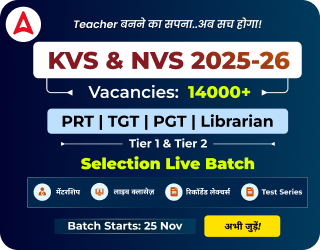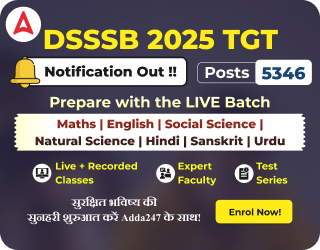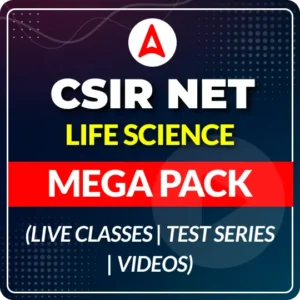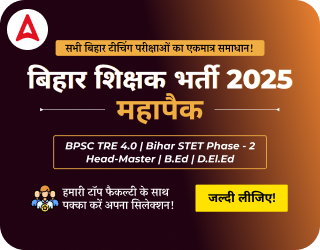Table of Contents
The UGC NET Electronic Science Syllabus 2025 is divided into two papers: Paper 1 evaluates general teaching and research aptitude, while Paper 2 focuses on core subjects in Electronic Science. Key topics in Paper 2 include semiconductor devices, analog and digital electronics, communication systems, circuit theory, microprocessors, microcontrollers, VLSI, instrumentation, and electromagnetic theory. This syllabus serves as a comprehensive guide for candidates aiming to qualify for the Junior Research Fellowship (JRF) or Assistant Professor roles. For effective preparation, candidates should refer to the detailed UGC NET Electronic Science Syllabus 2025 and exam pattern PDF provided in the article.
UGC NET Electronic Science Syllabus 2025
The UGC NET Electronic Science exam comprises two papers: UGC NET Paper 1 evaluates general teaching and research aptitude, communication skills, and logical reasoning, while Paper 2 focuses on specialized electronic science subjects such as semiconductors, IC fabrication, network theory, digital electronics, microprocessors, control systems, and transducers. This comprehensive syllabus is structured to test candidates’ foundational understanding and subject-specific expertise, ensuring they possess the necessary skills and knowledge to qualify for roles in research and academia within the field of Electronic Science.
Download the UGC NET Electronic Science Syllabus PDF Here
For candidates aspiring to excel in the UGC NET Syllabus for Electronic Science exam, accessing the Electronic Science Syllabus PDF is paramount. This document serves as a comprehensive guide, detailing the topics covered in both Paper 1 and Paper 2 of the examination. Click on the below link to download the UGC NET Electronic Science Syllabus PDF Here.
Download UGC NET Electronic Science Syllabus PDF Here
UGC NET Electronic Science Syllabus in Detail
The detailed unit-wise UGC NET Electronic Science Syllabus for Paper 2 has been explained below.
Unit 1: Semiconductor Physics and Materials
- Introduction to Semiconductors: This unit covers the fundamental concepts of semiconductors, including energy bands in solids, effective mass, density of states, and Fermi levels.
- Semiconductor Devices: This section delves into various semiconductor devices like diodes, bipolar junction transistors (BJTs), and field-effect transistors (FETs), exploring their characteristics, operation principles, and biasing techniques.
Unit 2: Integrated Circuits (ICs) Fabrication
- IC Fabrication Processes: This unit explores the different processes involved in IC fabrication, such as crystal growth, epitaxy, oxidation, lithography, doping, etching, isolation methods, metallization, and bonding.
- Thin-Film Technology: This section covers thin-film deposition techniques like sputtering, evaporation, and chemical vapour deposition (CVD), along with characterization techniques like X-ray diffraction (XRD), transmission electron microscopy (TEM), scanning electron microscopy (SEM), and energy-dispersive X-ray spectroscopy (EDX).
Unit 3: Network Theory
- Network Analysis Techniques: This unit focuses on methods for analyzing electrical circuits, including Kirchhoff’s current and voltage laws, nodal analysis, mesh analysis, superposition theorem, Thevenin’s theorem, Norton’s theorem, and maximum power transfer theorem.
- Network Synthesis: This section explores techniques for designing electrical circuits with desired characteristics, including passive filter design and two-port network parameters.
Unit 4: Analog Electronics
- Rectifiers and Power Supplies: This unit covers various rectifier circuits (half-wave, full-wave, bridge), along with power supply design principles, including voltage regulation and filtering techniques.
- Linear Integrated Circuits (ICs): This section explores operational amplifiers (op-amps), their characteristics, and applications as inverting and non-inverting amplifiers, comparators, integrators, and differentiators.
Unit 5: Digital Electronics
- Logic Families: This unit covers different digital logic families like TTL, CMOS, and ECL, exploring their characteristics, noise immunity, and power consumption.
- Combinational and Sequential Circuits: This section dives into designing digital circuits using logic gates, including adders, subtractors, multiplexers, decoders, flip-flops, and counters.
Unit 6: Microprocessors and Microcontrollers
- Microprocessor Fundamentals: This unit introduces the architecture of microprocessors, including the central processing unit (CPU), memory organization, instruction set, and addressing modes.
- Microcontroller Programming: This section focuses on a specific microcontroller (e.g., 8051), exploring its architecture, instruction set, addressing modes, and interfacing techniques with external devices.
Unit 7: Communication Systems
- Analog Communication Systems: This unit covers amplitude modulation (AM), frequency modulation (FM), and pulse modulation techniques, along with demodulation techniques.
- Digital Communication Systems: This section explores digital modulation techniques like binary phase shift keying (BPSK), quadrature phase shift keying (QPSK), and Manchester encoding, along with digital transmission channels and error detection/correction techniques.
Unit 8: Control Systems
- Control System Fundamentals: This unit introduces the basic concepts of control systems, including block diagrams, transfer functions, signal flow graphs, time-domain analysis, and frequency-domain analysis using Bode plots and root locus.
- Applications of Control Systems: This section explores various applications of control systems in feedback control loops, industrial process control, and electromechanical systems.
Unit 9: Microwave Engineering
- Microwave Theory: This unit covers the fundamentals of electromagnetic waves at microwave frequencies, including wave propagation in waveguides, cavity resonators, and transmission lines.
- Microwave Devices and Circuits: This section explores various microwave devices like klystrons, magnetrons, travelling-wave tubes (TWTs), and microwave transistors, along with their applications in radar and communication systems.
Unit 10: Electronic Measurements and Instrumentation
- Electronic Measuring Instruments: This unit covers various electronic instruments used for measuring voltage, current, resistance, power, frequency, and other electrical parameters.
- Digital Instrumentation: This section explores the use of digital instruments like digital multimeters (DMMs) and oscilloscopes, along with data acquisition systems and computer-aided instrumentation.
Important Topics in UGC NET Electronic Science Syllabus
The important topics in the UGC NET Electronic Syllabus have been explained below.
- Electromagnetic Theory
- Quantum Mechanics
- Solid-State Electronics
- Digital Electronics
- Analog Electronics
- Microprocessors and Microcontrollers
- Communication Systems
- Electromagnetic Waves and Antennas
- Network Theory
- Control Systems
- Electronic Materials and Devices
- Signal Processing
UGC NET Electronic Science Exam Pattern
Paper 1 of the UGC NET Electronic Science exam evaluates candidates’ general aptitude, teaching and research skills, and reasoning abilities, while Paper 2 tests their in-depth knowledge of Electronic Science concepts and theories. Success in both papers is essential for qualifying the exam. The exam is conducted in online mode, with a total duration of 3 hours. Paper 1 comprises 50 multiple-choice questions worth 100 marks, and Paper 2 includes 100 multiple-choice questions totaling 200 marks. Both papers carry no negative marking, and all questions are compulsory. The table below provides a detailed breakdown of the exam pattern, helping candidates understand the structure and plan their preparation effectively.
| Paper | Duration | Total Questions | Total Marks | Question Type | Sections | Marking Scheme |
|---|---|---|---|---|---|---|
| Paper 1 | 1 hour | 50 | 100 | MCQs | Teaching Aptitude, Research Aptitude, Reasoning, etc. | +2 for Correct, No Negative Marking |
| Paper 2 | 2 hours | 100 | 200 | MCQs | Electromagnetic Theory, Quantum Mechanics, etc. | +2 for Correct, No Negative Marking |




 HTET Syllabus 2026 (PRT, TGT, PGT), Chec...
HTET Syllabus 2026 (PRT, TGT, PGT), Chec...
 KVS PGT Syllabus 2025, Download PGT Syll...
KVS PGT Syllabus 2025, Download PGT Syll...
 KVS Syllabus 2025 For PRT, TGT, PGT and ...
KVS Syllabus 2025 For PRT, TGT, PGT and ...












